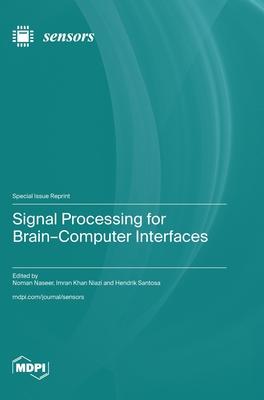With the astounding ability to capture a wealth of brain signals, Brain-Computer Interfaces (BCIs) have the potential to revolutionize humans’ quality of life by processing these brain signals for controlling external devices. Being an emerging and innovative field, BCIs offer numerous applications in various fields of life, including robotics, education, prosthetics, security and communication technologies. Processing neuro-physiological signals, a major component of BCIs, involves further procedures of (1) noise removal, (2) feature extraction and (3) classification. Pre-processed signals are subject to various noises, including power line noises, physiological noises, motion artifacts and interference noises. These noises can affect the efficiency of the entire BCI procedure. For this reason, noise removal algorithms are utilized for noise removal or reduction. Next, the process of feature extraction begins, in which algorithms are used to acquire relevant task-based features. This phase acquires data based on spectral, spatial and temporal domains. The last step for signal processing is classification, whereby the acquired and processed features are converted into viable commands, which ultimately control external devices. This reprint focuses particularly on these three signal-processing techniques.
| FindBook |
有 1 項符合
Signal Processing for Brain-Computer Interfaces的圖書 |
 |
Signal Processing for Brain-Computer Interfaces 出版社:Mdpi AG 出版日期:2024-03-21 語言:英文 規格:精裝 / 202頁 / 24.41 x 16.99 x 1.75 cm / 普通級/ 初版 |
| 圖書館借閱 |
| 國家圖書館 | 全國圖書書目資訊網 | 國立公共資訊圖書館 | 電子書服務平台 | MetaCat 跨館整合查詢 |
| 臺北市立圖書館 | 新北市立圖書館 | 基隆市公共圖書館 | 桃園市立圖書館 | 新竹縣公共圖書館 |
| 苗栗縣立圖書館 | 臺中市立圖書館 | 彰化縣公共圖書館 | 南投縣文化局 | 雲林縣公共圖書館 |
| 嘉義縣圖書館 | 臺南市立圖書館 | 高雄市立圖書館 | 屏東縣公共圖書館 | 宜蘭縣公共圖書館 |
| 花蓮縣文化局 | 臺東縣文化處 |
|
|
圖書介紹 - 資料來源:博客來 評分:
圖書名稱:Signal Processing for Brain-Computer Interfaces
Minor Fruits: Nutritional Composition, Bioactive Potential, and Their Food Applications
Sustainable Technologies for Food Waste Management
Control Theory for Practical Applications: With MATLAB Demonstration Programs
Food Security, Nutrition and Sustainability Through Aquaculture Technologies
Novel Nanocarriers for Skin Diseases: Advances and Applications
Advances in Autonomous Navigation Through Intelligent Technologies
Nonthermal Light-Based Technologies in Food Processing
Advances in Computational Intelligence Systems: Contributions Presented at the 23rd UK Workshop on Computational Intelligence (Ukci 2024), September 2
The Amateur Plankton Researcher’s Practical Guide: How to Study Plankton at Home
The Challenges of Era 5.0 in Accounting and Finance Innovation
Sustainable Technologies for Food Waste Management
Control Theory for Practical Applications: With MATLAB Demonstration Programs
Food Security, Nutrition and Sustainability Through Aquaculture Technologies
Novel Nanocarriers for Skin Diseases: Advances and Applications
Advances in Autonomous Navigation Through Intelligent Technologies
Nonthermal Light-Based Technologies in Food Processing
Advances in Computational Intelligence Systems: Contributions Presented at the 23rd UK Workshop on Computational Intelligence (Ukci 2024), September 2
The Amateur Plankton Researcher’s Practical Guide: How to Study Plankton at Home
The Challenges of Era 5.0 in Accounting and Finance Innovation
|








